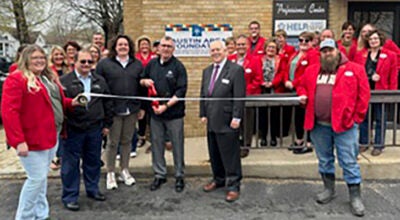With flooding nearly over, focus turns to cleanup, recovery
Published 8:42 am Friday, April 26, 2019
By Dan Kraker
MPR News/901.1 FM
Minnesotans have now endured more than a month of spring flooding, with rivers swollen first by massive snowmelt, then by a round of spring storms — including a blizzard — causing a second crest along many of the state’s major waterways.
It’s not over yet — as the Red River eases toward a crest at the Canadian border in Pembina, North Dakota — but the worst appears to be likely behind us, with water levels declining, roads reopening and inundated farm fields drying out across much of the state.
Still, many communities have a lot of work left ahead of them as they clean up after the floodwaters recede, and some towns are braced for more inconvenience as the threat of yet more flooding — thanks in part to Minnesota’s unpredictable spring weather — lingers.
Across the state, rivers slowly subside; roads reopening
Many of the state’s major rivers crested this week, and water levels are on the way down, including on the Mississippi River south of St. Paul, the lower Minnesota River and the Red River in far northwestern Minnesota.
And now that the ground is thawing and plants and trees are blooming, the vegetation is able to pull more moisture out of the soil, said Craig Schmidt, senior service hydrologist for the National Weather Service’s Twin Cities office.
“We’re now able to handle an inch or two of rain fairly well, without having much of an effect on the rivers,” he said. “That’s a good sign. So, unless we get a major thunderstorm system that parks over an area for a time period, we should be in pretty good shape.”
Still, rivers continue to run high. Some remain at major flood stage, including the Minnesota River in Montevideo and Morton and the Mississippi River in St. Paul.
So if a major storm does hit, or if repeated smaller storms keep soil moisture high, “then we’re going to get to thunderstorm season and we could be in bad shape again,” Schmidt said.
Amanda Lee, a hydrologist at the National Weather Service in Grand Forks, N.D., agrees that, barring any “huge rainfall systems moving through,” the region shouldn’t see more major river rises.
But she said it’s going to take a long time for water levels to recede.
“It’s more of a sit and wait kind of thing,” she said. “There’s still levees that are being used, levees that are being patrolled. Some places will have 24/7 levee patrols to make sure that it’s doing what it’s supposed to do and it’s not breaking or cracking.”
The town of Oslo, Minnesota, was cut off from the surrounding area by floodwaters for nearly two weeks. But on Tuesday evening, the town was finally reconnected to the outside world when state Hwy. 1 reopened, allowing traffic to flow in and out of the town from Minnesota and North Dakota.
National Guard troops, who had been sent to assist the town when it was surrounded by floodwaters from the Red River earlier this month, left early Wednesday morning, reported Kitty Stromberg, who owns Kitty’s Cafe in Oslo.
“I’ve had the National Guard here for 11 days. You almost kind of miss them. You get to know them all, and they’re such nice kids, and what they do for us,” Stromberg said. “So it’s kind of different not having them here anymore.”
Still, she said it’s time to get back to the normal routine. She said regular customers have started to return, but added that a lot of locals “are surrounded by water still out on their farms. So there’s still a lot of people who can’t get home yet.”




